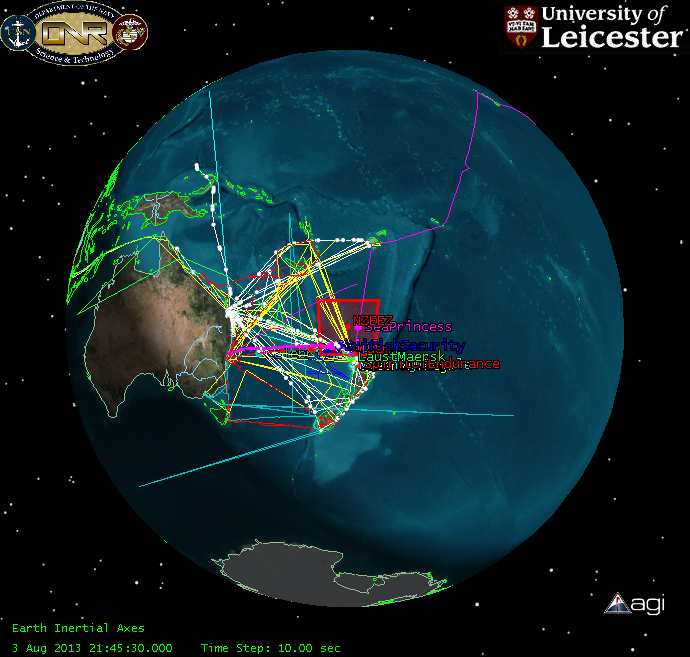
A team of NIST scientists has devised and demonstrated a novel nanoscale memory technology for superconducting computing that could hasten the advent of an urgently awaited, low-energy alternative to power-hungry conventional data centers and supercomputers.
In recent years, the stupendous and growing data demands of cloud computing, expanded Internet use, mobile device support, and other applications have prompted the creation of large, centralized computing facilities at hundreds of thousands of sites around the world.
Such facilities typically run 24 hours a day and employ arrays of semiconductor-based servers which require substantial amounts of electricity and generate correspondingly substantial amounts of heat – which in turn requires yet more energy to remove.*
Even if the power needs for all U.S. data centers – estimated to grow from 72 terawatt hours (TWh) to 200 TWh by 2020, roughly 5% of all electricity consumed in the nation – can be met, the inherent constraints of semiconductor electronics will still set scaling and clock-rate limits on future processing capacity at a time when digital information volume is increasing exponentially.
One promising replacement technology is superconducting (SC) computing, which offers the prospect of moving information without loss over zero-resistance channels. Instead of using semiconductor transistors to switch electronic signals, SC systems employ tiny components called Josephson junctions** (JJs). JJs operate near absolute zero (in the range of 4 K to 10 K), dissipate minuscule amounts of energy (less than 10-19 joule per operation), and can be switched between states at hundreds of billions of times a second (frequencies of gigahertz), compared to a few gigahertz for semiconductor computers.
To date, however, many key technologies required for a working SC computer – such as logic circuits, component interconnects, and most notably cryogenic memory – have not been developed. But the Intelligence Advanced Research Projects Activity (IARPA) has determined that, thanks to recent research progress, the “foundations for a major breakthrough” are now in place, and has launched a multi-year program to investigate the practical viability of SC computing.
NIST scientists have been engaged to develop the necessary metrology and evaluation methods for the IARPA program; but long before the program began they had been focusing on one of the most stubborn obstacles to SC computing: the lack of a memory system that can work at the cryogenic temperature and blazing speed of the JJ switches while also requiring minimal operating energy.
Read more: Hybrid Memory Device for Superconducting Computing
The Latest on: Superconducting Computing
[google_news title=”” keyword=”Superconducting Computing” num_posts=”10″ blurb_length=”0″ show_thumb=”left”]
via Google News
The Latest on: Superconducting Computing
- 'World's purest silicon' could lead to 1st million-qubit quantum computing chipson May 6, 2024 at 4:59 pm
This means that even if we had a quantum computer with millions of qubits, many of those would be redundant even with error-correction technologies, making the machine extremely inefficient. Qubits ...
- How Schrödinger's cat could make quantum computers work betteron May 6, 2024 at 8:00 am
A quantum bit inspired by Schrödinger’s cat can resist making errors for an unprecedentedly long time, which makes it a candidate for building less error-prone quantum computers ...
- Two facilities team up for structural biology advances with X-ray free-electron lasers and exascale computingon May 6, 2024 at 7:42 am
Plans to unite the capabilities of two cutting-edge technological facilities promise to usher in a new era of dynamic structural biology. Through DOE's Integrated Research Infrastructure, or IRI, ...
- Quantum computing breakthroughs draw investment back to sectoron May 4, 2024 at 10:34 pm
Many in the industry believe that a clear route has recently opened up to building large-scale systems that will bring real technical and business advantages.
- How MIT Is Redefining Quantum Computing With New Entanglement Controlon May 4, 2024 at 5:21 pm
The advance offers a way to characterize a fundamental resource needed for quantum computing. Entanglement is a form of correlation between quantum objects, such as particles at the atomic scale. This ...
- The quantum revolution may be just around the corner — Congress should acton May 4, 2024 at 5:00 am
In November, the House Science Committee voted unanimously to reauthorize the 2018 National Quantum Initiative. The bill has been stuck in Congress ever since. If passed by Congress, it would ...
- Researchers build an atomic-level model of oxidization on the surface of tantalum filmon May 2, 2024 at 5:00 pm
Tantalum superconducting material shows great promise for making qubits. When an oxide layer forms on the surface of tantalum, it can lead to quantum decoherence. In this study, researchers used ...
- Researchers build new device that is a foundation for quantum computingon May 1, 2024 at 11:59 am
Scientists led by the University of Massachusetts Amherst have adapted a device called a microwave circulator for use in quantum computers, allowing them for the first time to precisely tune the exact ...
- Bolometer measures state of superconducting qubiton April 29, 2024 at 9:08 am
Researchers Finland say they are the first to determine the state of a superconducting qubit using a bolometer – a device that measures radiant heat. While the fidelity and speed of the readout fall ...
- Quantum computing breakthrough could happen with just hundreds, not millions, of qubits using new error-correction systemon April 29, 2024 at 4:00 am
Scientists have designed a physical qubit that behaves as an error-correcting "logical qubit," and now they think they can scale it up to make a useful quantum computer using a few hundred.
via Bing News









